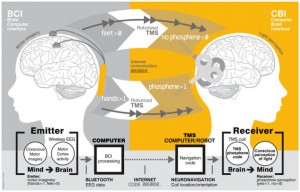That ominous specter of death. The one certainty in life that we are all careening towards. But how much do we really understand about death? Medically death is defined as the moment the heart stops beating and cuts off blood to the brain. Within seconds after heart failure the brain’s cerebral cortex — the “thinking part” of the brain — slows down instantly and flatlines (meaning no brainwaves are visible on an electric monitor). This initiates a chain reaction of cellular processes that eventually results in the death of brain cells; as a result the brain’s functions also stop and can no longer keep the body alive. The big question is after the heart stops beating, and both heart and brain activity flatlines, how quickly does cognition or awareness fade? A relatively recent study suggests that consciousness continues even after death.

